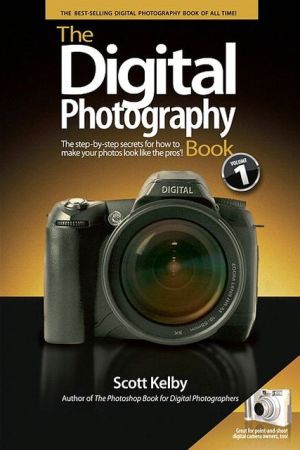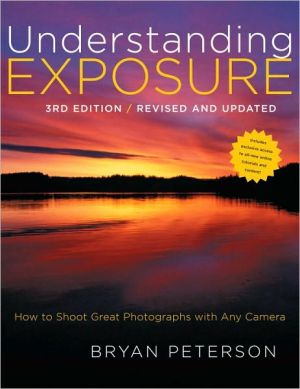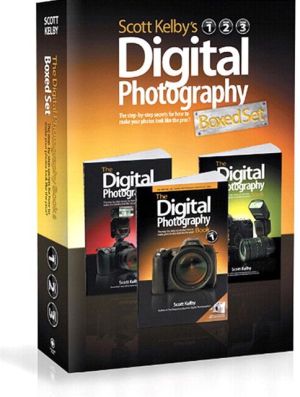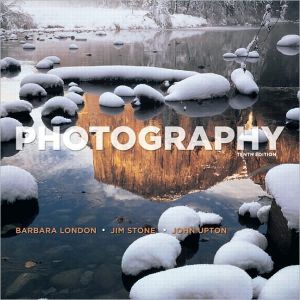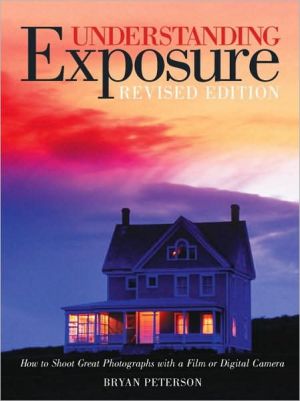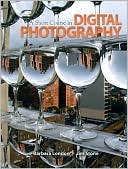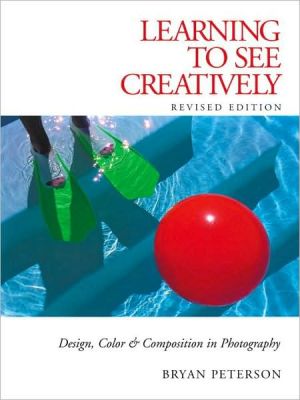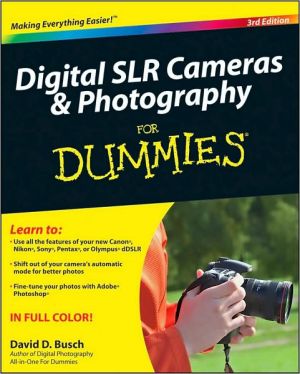Crime Scene Photography
Crime Scene Photography, Second Edition, offers an introduction to the basic concepts of forensic picture-taking. The forensic photographer, or more specifically the crime scene photographer, must know how to create an acceptable image that is capable of withstanding challenges in court. The photographic theory and principles have to be well grounded in the physics of optics, the how-to recommendations have to work, and the end result must be admissible in court. Based on the author's years...
Search in google:
Crime Scene Photography, Second EditionEdward M. Robinson, Associate Professor, Forensic Science Department, the George Washington University, Washington DCWith contributions from David ("Ski") Witzke - Vice President, Program Management, Foray Technologies, and Robert C. Sanders-Wisconsin State Crime Lab.Crime Scene Photography, Second Edition covers the general principals and concepts of photography, while also delving into the more practical elements and advanced concepts of forensic photography. Edward Robinson assists the reader in understanding and applying essential concepts in order to create images that are able to withstand challenges in court. The first part of the book deals with the basic theory and science of photography required to take superior photographs, and covers topics such as composition, exposure, focus, depth of field, and flash techniques. The second part of the text deals specifically with the challenges of photographing a crime scene, including instructions on how to document bodies and wounds, traffic accident photography, underwater photography and aerial photography. In the latter portions of the text, the author turns to digital theory and its advantages and disadvantages.New to this edition:Over 600 full-color photographs, also electronically available on the companion Web site.Two new chapters on 'The History of Forensic Photography', and 'Digital Image Processing of Evidentiary Photography'Key Features:Includes an Instructor Web site with lecture slides, practical exercises, a test bank and image collectionAn essential reference for crime scene photography, including topics such as Composition, the Inverse Square Law, Court Cases affecting photography, Digital Processing techniques, Photogrammetry Required reading by the Crime Scene Certification Board of the International Association for Identification (IAI) for all levels of certificationEdward M. Robinson began his career in law enforcement in 1971, with the Arlington County (Virginia) Police Department (ACPD). After 25 years with the ACPD, Mr. Robinson created the Crime Scene Investigation concentration at The George Washington University for their Master of Forensic Science degree program, and continues there today.Visit the ‘Crime Scene Photography’ Web site at: http://www.elsevierdirect.com/companions/9780123757289
Crime Scene Photography\ \ By Edward M. Robinson \ Academic Press\ Copyright © 2010 Elsevier Inc.\ All right reserved.\ ISBN: 978-0-12-375729-6 \ \ \ Chapter One\ History of Forensic Imaging\ Robert C. Sanders, M.A. Forensic Scientist\ CONTENTS\ My Inspiration 1 The Practical Value 2 The History 3 Summary 17\ KEY TERMS\ Alternate light source Ambrotype Barrier filter Calotype Carte-de-visite Chain of custody Composite photographic superimposition Daguerreotype Dye-sensitizing Exciter light source Fair and accurate photographic representation Gel or gelatin filter Ghost photographs Glass filter IR IR Photograph Optical Watermark Orthochromatic film Panchromatic film Photogrammetry Pro-sumer QTVR Spirit photographs Stokes' Law Telecine Machine Tintype Wet plate\ MY INSPIRATION\ A common misconception is that the history of our profession is useful only to historians, teachers, students, and trivia buffs. This misconception is re-enforced by the daily pressures of the workload that sometimes has to be accomplished with inadequate staff, outdated equipment, limited funding, lack of recognition of photography as a profession, and limited training.\ Several years ago, two things prompted me to put together a presentation on the history of forensic photography that I have presented at several International Association for Identification (IAI) conferences, which, in turn, evolved into this chapter. First, it became apparent this was a weak area for applicants taking the written component of the IAI Forensic Photography Certification Test. Second was the following comment that Ron Smith (retired forensic scientist and President of Ron Smith and Associates) made to me: "If you do not know the history of your profession, you are doomed to repeat its mistakes."\ As I began putting this presentation together, I soon learned that I was gaining a better insight into how the evolution from film to digital photography was changing how I do my own job, just as previous evolutionary changes in photographic technology had affected my predecessors. One pattern that I observed was that the profits in the consumer photographic market were a significant factor in the survival of a technology. As a result, when my laboratory director asked me what signs he could look for to determine when we would have to convert from film to digital, I told him the following: When you go into the local discount stores and see a dramatic reduction in film for sale to consumers, you better have the funding to convert to digital photography, and when there is no film for sale for consumers, you need to have already completed the conversion. It also made me more aware that the students in evidence technician class had to learn the same basic photographic skills with their digital cameras that I learned in the late 1970s with film-based cameras.\ THE PRACTICAL VALUE\ I hope that this background will help to explain why a knowledge of the history of forensic imaging can be useful in several practical ways to anyone working in any capacity in forensic/law enforcement imaging. First, you will have the knowledge needed to refute a mistaken argument that a procedure or equipment that you use is new and novel and therefore subject to a Frye Hearing to determine admissibility. Just because it is new and novel to a defense lawyer or an individual forensic photographer does not necessary mean that it is new and novel to the forensic science community as a whole. Second, if you are going to be taking a certification test, most written certification tests include questions about the history of your profession. Third, it can help you to anticipate the likely impact and how to adapt to changes or evolution in technology. Fourth, this knowledge can help you to be better prepared to advise lawyers, managers, and others on forensic imaging issues. Fifth, keep in mind that the law enforcement market is a relatively small percentage of the overall still photography market as compared to commercial photography, the consumer market, the newspaper and magazine publishing industry, portrait/wedding studios, and mini-labs. From this perspective, it makes sense to keep up to date with what happens at the Photo Marketing Association (PMA) imaging trade show, where most of the new imaging products are announced, except for specialized equipment used only by law enforcement or other small niche markets.\ The important part is that as you read through the following history, you should also be looking for patterns in the evolution of the technology and the markets for this technology. In the early days of the wet plate, the market for photographic equipment and supplies was limited to mainly professionals. There is a valid argument that Kodak changed all that when it marketed roll film cameras to the general public and provided the processing and printing. In today's digital photography world, there are three markets: amateur or consumer, prosumer, and professional.\ So much for the overview of the framework; now we move on to the main course, the history of forensic imaging.\ THE HISTORY\ The history of forensic imaging begins with the camera obscura, the first pinhole camera. Although there may be a conflict among authors as to who is the first to describe the camera obscura, it is most likely the Arab scholar Hassan bin al Haitham who wrote about it in 1038 (Davis, 1995, p. 2; Frizot, 1998, p. 18). It is common knowledge that these early pinhole cameras were used by scientists to observe the sun and by artists to make sketches. Two others who are credited by some authors as the first to describe the camera obscura are Roger Bacon in 1267 and Leonardo da Vinci in 1490 (Davis, 1995, p. 2; Frizot, 1998, p. 17).\ In reference to the early history of imaging, there are two potential reasons for differences in the date that an author lists for a specific historical event. First, each event has a possibility of four dates associated with it: when the research began, when the research results were completed, when the results were patented, and when the results of the research were first published or publicly announced. There were three more evolutions in the design of the camera obscura that were necessary before it would have all the basic functional parts of early photographic cameras (see Figure 1.1). In 1550, Girolamo Cardano added a lens to the design of the camera obscura. It is reported that he used the word "lens" because the color of the glass lens reminded him of brown lentils that were used in Italian soup (Hedgecoe, 1980, p. 18). The second evolution, the addition of lenses and curved mirrors to produce an upright image, was accomplished in 1558 by Giovanni Battista della Porta (Davis, 1995, p. 2). However, this was not published until 1588 (Frizot, 1998, p. 18). The third evolution, the invention of a diaphragm, was believed to have been made by Daniele Barbaro in 1568 (Hedgecoe, 1980, p. 18).\ The early discoveries that ultimately led to the development of flexible silver halide-based film were also progressing slowly. In 1614, Angelo Sala observed that sunlight turned silver nitrate black. However, he did not know why, and there was no record of him recognizing the significance of this observation (Davis, 1995, p. 3). Later in 1725, Johann Heinrich Schulze proved that some silver salts were darkened by exposure to light (Davis, 1995, p. 3) (1727 according to Hedgecoe, 1980, p. 20; Frizot, 1998, p. 18). In 1737, Jean Hellot was reported to have used a photographic process to make secret writings visible by exposure to light. Hellot may have been the first one to use the word "photography," which means writing with light (Hedgecoe, 1980, p. 20). In 1777, Carl Wilhelm Scheele discovered that silver chloride was reduced to blackened silver by exposure to light and that ammonia dissolved the silver chloride without affecting the blackened silver. However, there was no recording of Scheele's trying to use this discovery to record photographic images (Davis, 1995, p. 3; Frizot, 1998, p. 19). The first known attempt by Thomas Wedgwood to use a photographic process to take a photograph with a camera obscura occurred in 1795. The attempt failed due to a combination of underexposure and Wedgwood's inability to fix the image (Davis, 1995, p. 4; Hedgecoe, 1980, p. 20). In 1800, Sir William Herschel made a discovery that would later be extremely important to law enforcement photographers. Herschel discovered the invisible infrared region by a simple experiment. He used a beam splitter to split out a white light source into individual colors when he placed a thermometer next to the red end where there was no visible color of light. This is how he discovered the infrared region of the electro-magnetic spectrum (Scott, 1969, Vol. 2, p. 79).\ In 1816, Joseph Niépce began his photography experiments (Davis, 1995, p. 4; Newhall, 1964, pp. 13 and 32; Frizot, 1998, p. 19). In 1819, while Niépce was conducting his experiments, John Herschel discovered that hydrosulfite of soda dissolves silver salts (Newhall, 1964, pp. 13 and 32; and Frizot, 1998, p. 19). This was the missing link needed to fix a developed photographic image. However, it was not until several years later in 1826 when Niépce successfully made the first known photograph (see Figure 1.2). For this reason, he has been credited as being the inventor of photography (Davis, 1995, p. 4; Newhall, 1964, pp. 20-21; Frizot, 1998, p. 19).\ It was also about this time that the first discovery critical to the development of motion pictures and video recording was made. In 1824, Peter Mark Roget wrote a paper on the persistence of vision, which was credited with leading to the following inventions that preceded motion pictures and video: Ayrton's thaumatrope, Stampfer's stroboscope, Faraday's Wheel, and the flip book (Cheshire, 1979, p. 18).\ There is no known record of Niépce's technology being commercially successful. However, in 1829 Louis Daguerre formed a partnership with Joseph Niépce and, after Joseph's death, with Isidore Niépce (Frizot, 1998, p. 21). In 1839, Daguerre's invention, the daguerreotype, was announced by Arago. The daguerreotype used a silver nitrite light-sensitive emulsion that was developed with mercury vapor and fixed with a strong salt solution to produce a positive photographic image (Davis, 1995, p. 5). The daguerreotype was the first commercially successful photographic process. Later in this chapter, three photographic processes that replaced the daguerreotype will be discussed. In addition to their historical value, these processes are important for the modern forensic photographer because they show how the past market trends have influenced the adoption of new photographic technology. Understanding this recurring pattern may help a forensic photographer to better understand how the photographic market is likely to affect what technology will be available within the next 2 to 5 years, especially when planning for future photographic capital equipment budgets.\ Before the announcement of the daguerreotype, in 1835 Fox Talbot is reported to have produced a photographic negative (Hedgecoe, 1980, p. 22). This was followed in 1839 by Sir John Frederick William Herschel's discovery of hyposulphite of soda for fixing photographic images. Therefore, he was credited with developing hypo for fixing photographic images. Further, Herschel was also credited with coining the term "photography" (Davis, 1995, pp. 6-7; Hedgecoe, 1980, p. 20; further, according to Hedgecoe, it was Jean Hellot, who earlier used a photographic process to make secret writings visible by exposure to light, who coined the word "photography," which means "writing with light."). Also in 1839, William Henry Fox Talbot invented the calotype, which was a silver chloride-coated light-sensitive paper that was fixed with strong salt solution (Davis, 1995, pp. 5-6; Hedgecoe, 1980, p. 22). The calotype also appears to have been a commercially successful photographic process. The calotype was later patented by Talbot in 1841 (Hedgecoe, 1980, pp. 22-23). In my research into the history of forensic photography, I noted several conflicting dates related to several photographic inventions. Some of these conflicts may be due to any one of the following: mistake by other authors, using the date the research started, using the date the research first produced successful results, using the date the invention was announced, or using the date the invention was patented.\ Both Talbot (calotype) and Daguerre (daguerreotype) later used Herschel's hypo to fix their photographic images (Davis, 1995, pp. 5-7).\ From 1839 to 1841, there were three significant uses of daguerreotypes. In 1839, Noel Lerebors's scenic daguerreotypes were copied by engravers for publication (Davis, 1995, p. 9). This use was significant because the printing/newspaper industry later became a major market for photographic equipment, supplies, and processors. In 1840, the first portrait studio in New York City opened by Wolcott and Johnson (Newhall, 1964, p. 21). This use is significant because this was the first professional use of photographs and in a market that is controlled by what the customer was willing to purchase. In 1841, the Paris police department was the first agency to use daguerreotype mug shots (Miller, 1998, p. 1; Scott, 1969, Vol. 1, p. 2).\ In 1844, Talbot developed an improved calotype paper negative. This was a paper negative process using a gallic acid and silver nitrate solution with a hypo fixer. This is the process that eventually evolved into the photographic negative printing process that is in use today (Davis, 1995, p. 7). In the same year, Talbot's book Pencil of Nature was the first to use photographic illustrations with calotype prints (Davis, 1995, p. 9; Frizot, 1998, p. 62)\ Several years later, in 1851, there were several significant developments. Aimé Laussedat is considered the developer of the science of photogrammetry (University of Vienna website, Introduction to Photogrammetry). Frederick Scott Archer developed the collodion or wet plate process. This consisted of an emulsion of iodized collodion immersed in a bath of silver nitrate coated on a glass plate. This emulsion had to be exposed while still wet, which led to the nickname of "wet plate process." The emulsion was developed in either pyrogallic acid or a solution of ferrous sulfate (Davis, 1995, p. 8; Spira, 2005, et al., p. 43). Finally, there was the first documented scientific examination of a photographic fake. This involved the claim by Reverend Levi Hill that he had developed a method to take color daguerreotype photographs (Davis, 1995, p. 18). However, two authors listed this color photograph as genuine (Newhall, 1964, pp. 269 and 272; Spira, 2005, et al., p. 31).\ Another milestone was accomplished by Sir George G. Stokes when in 1852 he discovered UV fluorescence and formulated Stokes' Law (Scott, 1969, Vol. 2, p. 63), which is the fundamental theoretical basis of all fluorescent photography currently used in law enforcement. This theory is very simple. The wavelength of the fluorescence is always longer than the wavelength of the light that excited the fluorescence. The fluorescence will not be as bright as the exciting light source. What this means in practice is that if the film or camera sensor is sensitive to both the color of the exciter light source (such as an argon-ion laser with an output at 514nm) and the color of the fluorescent light (such as the color of the fluorescent color of R6G dye-stained latent print evidence), you will need a barrier filter to block the exciter light source so that the film or sensor can record the fluorescence.\ From 1854 to 1855, three new photographic processes became available that produced lower quality photographs but were cheaper than the daguerreotype process. Starting in 1854, J. A. Cutting invented the ambrotype. The ambrotype is a collodion on a glass bass. It was cheaper and easier to process compared to the daguerreotype process (Davis, 1995, p. 10). In the same year, André Adolphe-Eugene Disdéri invented and patented the carte-de-visite process, which was an albumin emulsion coated on paper. Again, carte-de-visite was cheaper and easier to process compared to the daguerreotype process (Davis, 1995, p. 10; Spira, 2005, et al., pp. 55-62). In the following year, Hamilton Smith invented the tintype, which is also called a ferrotype. It is a collodion emulsion coated on metal. Again, the tintype was cheaper and easier to process compared to the daguerreotype process. Because of the cost, even high-end portrait studios had to convert from the higher-quality daguerreotype because customers in general were more interested in how much they had to pay for the portraits (Davis, 1995, p. 10). So what does this mean for today's forensic photographer? Basically, the professional portrait photographers determined which cameras were being purchased, and thus their purchases determined the camera side of the market simply because there did not appear to be any significant amount of photography done by amateur photographers up to this point. However, in terms of the recording medium, it was what amateur consumers were willing to purchase that appears to have controlled which media is used and which media becomes obsolete. Although this is very simplistic compared to today's market, studio owners had the same problem when planning for future purchases of cameras and recording media that forensic photographers have today. The successful studios probably looked at which cameras their fellow professionals purchased and then decided which of these cameras best suited their needs. The successful studios probably looked at how much amateur consumers were willing to pay for portraits and then decided on one of the photographic processes (equivalent of film today) that would allow them to make a profit at this price\ (Continues...)\ \ \ \ \ Excerpted from Crime Scene Photography by Edward M. Robinson Copyright © 2010 by Elsevier Inc.. Excerpted by permission of Academic Press. All rights reserved. No part of this excerpt may be reproduced or reprinted without permission in writing from the publisher.\ Excerpts are provided by Dial-A-Book Inc. solely for the personal use of visitors to this web site. \ \
Foreword to the Second Edition xiForeword to the First Edition xiiiAcknowledgments xvIntroduction xviiChapter 1 History of Forensic Imaging Robert C. Sanders, M.A. 1My Inspiration 1The Practical Value 2The History 3Summary 17Chapter 2 Composition and Cardinal Rules 19Use-Once (or, Use One Time) Camera versus a Professional Camera System 20Composition and Cardinal Rules 22Cardinal Rules of Crime Scene Photography 46Summary 47Chapter 3 Basic Exposure (Non-Flash) Concepts 51The Proper Exposure Triangle 52Shutter Speed as Motion Control 76Using Slow Shutter Speeds to Eliminate Rain and Snow 79Reciprocal Exposures 82The Reflective Light Meter 86"Normal" and "Non-Normal" Scenes 90Tools for Determining "Proper" Exposures with Tricky Scenes 98Bracketing 103The F/16 Sunny Day Rule 107Causes for Complete Rolls of Film with Exposure Errors 111Common Filters 112The Eye Cup Cover 119Summary 121Chapter 4 Focus, Depth of Field, and Lenses 125Focus 126Depth of Field 156Lenses 166Summary 206Chapter 5 Electronic Flash 209Guide Numbers 210Flash Sync Speeds 213Set the Flash for the Film Used (If Still Using a Film Camera) 217Manual Flash Mode 217The Inverse Square Law 237Automatic and Dedicated Flash Exposure Modes 242Built-in Flash Units 250Fill-in Flash 251Oblique Light, Both Flash and Non-Flash (Flashlight) 258Bounce Flash 279Painting with Light 286Summary 300Chapter 6 Crime Scene Photography 305Photo Documentation Forms 306Overall Photographs 313Midrange Photographs 329Close-Up Photographs 336The Photographic Documentation of Bodies and Wounds 341Summary 363Chapter 7 Ultraviolet, Infrared, and Fluorescence 367The Electromagnetic Spectrum (EMS) 363Ultraviolet Light (UV) 373Infrared Light (IR) on the Electromagnetic Spectrum 380Visible Light Fluorescence 387Summary 394Chapter 8 Photogrammetry 399Introduction to Photogrammetry 400Perspective Grid Photogrammetry 402Perspective Disc Photogrammetry 417Natural Grid Photogrammetry 422Reverse Projection Photogrammetry 428Rhino Photogrammetry 432Summary 436Chapter 9 Special Photography Situations 441Accident Photography 442Surveillance Photography 459Aerial Photography 468Underwater Photography 474Summary 484Chapter 10 Digital Imaging Technologies David "Ski" Witzke 489In the Beginning 490Expose Yourself to Digital Imaging Concepts: Bits, Bytes, Pixels, and Dots 500Take a Picture! It Lasts Longer ? Or Does It? 511Image S&M ? Storage and Management of Your Digital Images 518Summary 530Chapter 11 Digital Image Processing of Evidentiary Photography David "Ski" Witzke 533Best Practices and Guidelines 537General Guidelines and Requirements 537The Order of Enhancements 540Getting Started 541The Imaging Process (The Act Formerly Known as "Enhancement") 549Summary 580Chapter 12 Legal Issues Related to Photographs and Digital Images 583Criteria of Photographs and Digital Images as Evidence 584The Purpose of Crime Scene Photographs 594Photographs of Suspects and Evidence 594Legal Implications of Digital Imaging 596International Association for Identification (IAI) Resolution 97-9 604Case Law Citations Relevant to Film and Digital Images 605Canadian Cases 642Summary 648Appendix 651Glossary 667Subject Index 685
\ From the Publisher"[The book] addresses a technically sensitive practice with great accuracy. The writing is concise and easy to understand... The content is well organized and, fittingly, uses ample photographs as examples of both correct and incorrect ways to employ various photographic techniques. Specific topics discussed range from filters, flash, and focus to evidentiary concerns and court presentations. An excellent table of contents and index make finding specific content a breeze…. The text is written primarily for a law enforcement audience. This solid text would serve nicely, however, for security professionals who may need to document accidents, potential hazards, crimes, or property loss. It is an excellent reference and would serve both a novice and experienced photographer."--Security Management Magazine\ \ \

